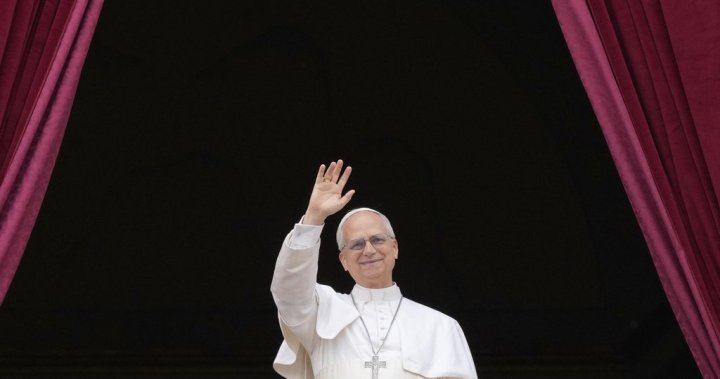Pope Leo XIV’s zero tolerance stance on abuse cases within the Catholic Church marks a significant shift in Vatican policy, though skeptics question whether institutional change will truly follow his forceful rhetoric.
The pontiff’s address to the College of Cardinals yesterday left little room for interpretation. “The abuse of children or vulnerable adults is not merely a sin to be forgiven, but a crime to be prosecuted,” Leo declared, his voice firm despite his 78 years. “Any cleric found guilty of such acts will face immediate removal from ministry and referral to civil authorities.”
This policy aims to close historical loopholes that allowed accused priests to be reassigned rather than removed. According to data from the Canadian Conference of Catholic Bishops, over 180 Canadian priests have faced credible accusations since 1950, with varying consequences depending on diocesan leadership.
Susan O’Malley, director of Survivors Network Canada, remains cautiously optimistic. “We’ve heard strong words before,” she told me during a phone interview from her Montreal office. “What matters is whether bishops implement these directives consistently across all dioceses.” O’Malley’s organization has documented cases where diocesan autonomy led to inconsistent handling of abuse allegations.
The Pope’s directive specifically requires all dioceses to establish independent review boards including lay experts in psychology, law enforcement, and child protection. These boards would handle initial investigations before ecclesiastical proceedings begin.
Father Thomas Reilly, spokesperson for the Archdiocese of Ottawa, emphasized the practical impact of these changes. “This removes ambiguity about reporting requirements,” he explained. “In the past, some bishops felt torn between canonical procedures and civil obligations. That confusion ends now.”
Canadian implications could be substantial. The 2021 Truth and Reconciliation Commission highlighted how church structures sometimes shielded abusers in residential schools from accountability. Leo’s policy specifically acknowledges this dark history, mandating cooperation with Indigenous-led healing initiatives.
Walking through St. Michael’s Cathedral in Toronto yesterday, I spoke with parishioners following morning Mass. Their reactions revealed the complexity of rebuilding trust.
“It’s about time,” said Margaret Wilson, 67, who has attended the cathedral for four decades. “But I wonder how many children could have been protected if this had been the position thirty years ago.”
Recent polling from the Angus Reid Institute shows Canadian Catholics remain deeply divided on church leadership, with only 38% expressing “great confidence” in the hierarchy’s handling of abuse cases.
Leo’s policy contains concrete measures beyond rhetoric. Dioceses must publicly disclose the names of credibly accused clergy—a practice some Canadian dioceses have resisted. Additionally, bishops who fail to report abuse allegations now face potential removal from office under canon law.
Dr. Michael Harrison, professor of religious studies at McGill University, sees this as the most consequential reform. “Historically, episcopal accountability has been the missing piece,” he explained. “Without consequences for bishops who cover up abuse, other reforms ring hollow.”
The Catholic Church in Canada has paid over $79 million in settlements to abuse survivors since 2000, according to Church Insurance Corporation records. Critics argue these payments often came with confidentiality requirements that hindered transparency.
Leo’s policy specifically prohibits confidentiality agreements in abuse settlements unless requested by victims themselves—a change that survivor advocates have long sought.
Implementation remains the crucial question. Previous declarations from Rome have sometimes lost force when filtered through local church structures. Leo has established a Vatican monitoring body to conduct random audits of diocesan compliance, though its effectiveness remains untested.
Father Reilly acknowledges the challenge: “This requires cultural change at every level of church leadership. That doesn’t happen overnight, but having clear consequences for non-compliance will accelerate the process.”
The policy arrives as Canadian church attendance continues its decades-long decline, with weekly Mass attendance falling from 46% of Catholics in 1975 to just 15% today. While multiple factors drive this trend, public perception of the church’s handling of abuse cases ranks among the most significant.
Walking back to my car after the cathedral interviews, I passed a small group of protesters holding signs demanding greater accountability. Their presence—on an ordinary Wednesday morning—demonstrates how deeply this issue resonates beyond church walls.
For many Canadian Catholics, the papal declaration represents hope for institutional renewal. For others, particularly survivors, words without consistent action will deepen existing wounds. As one survivor told me, requesting anonymity: “I’ll believe it when I see priests in courtrooms and bishops held accountable. Until then, it’s just more words.”
The coming months will reveal whether Pope Leo’s policy truly represents the turning point many Catholics have awaited, or another unfulfilled promise from an institution struggling to reckon with its darkest failures.






